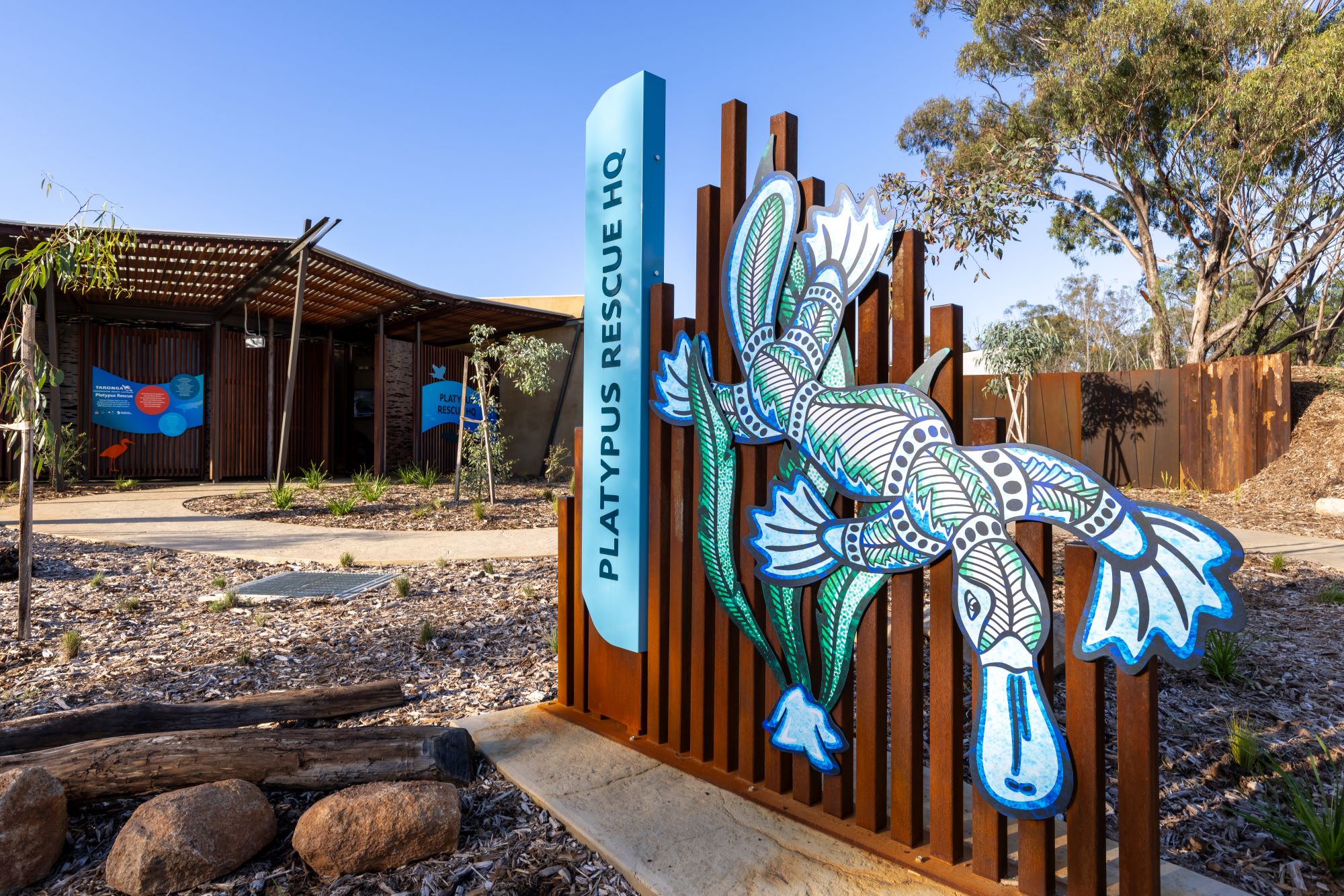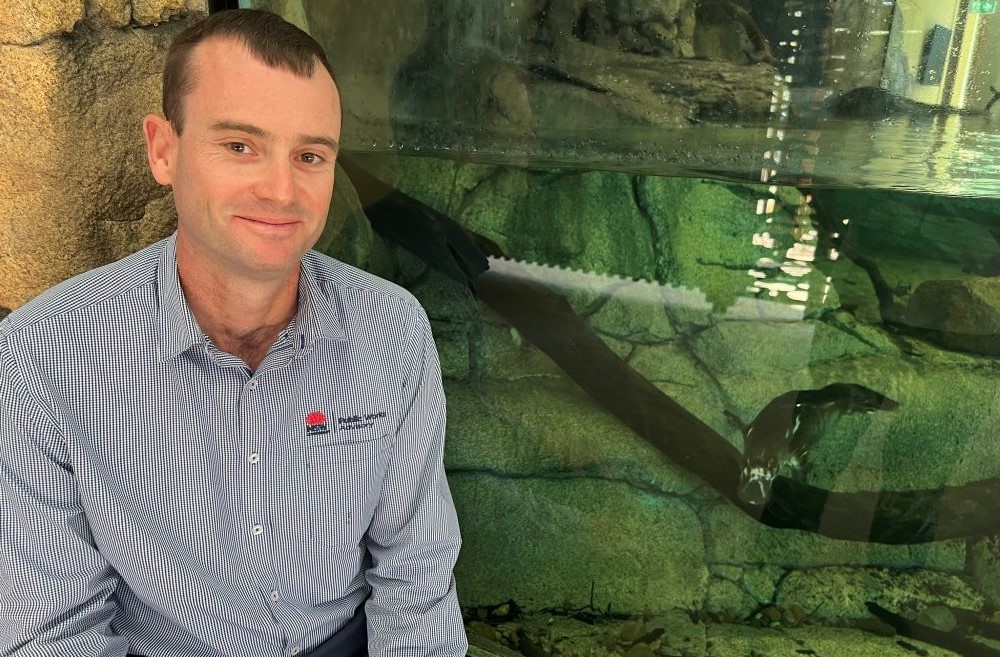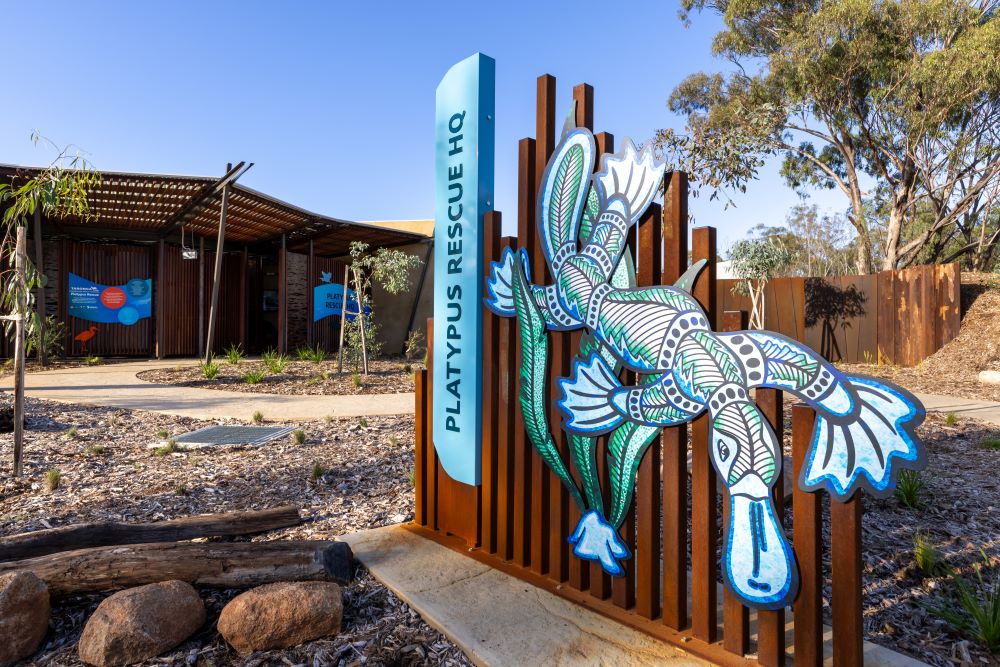
Staff spotlight: Alex Campbell helps to build a platypus legacy
Meet Alex Campbell, NSW Public Works, Manager of Projects and Client Delivery, Dubbo, who led the delivery of the newly opened Platypus Rescue HQ at Taronga Western Plains Zoo (TWPZ).


Built to protect platypus from environmental challenges and to allow research into the notoriously shy animal, Platypus Rescue HQ on Wiradjuri Country in Dubbo is the largest purpose-built platypus conservation centre in the world. A legacy in size and intent, every bit of the $12m project is dedicated to platypus conservation and eco sustainable principles.
The February opening of the Platypus Rescue HQ is testament to collaboration on an international, national, and local stage where all parties were united by the desire to conserve and understand this unique Australian species.
In the pedigree mix of partners were San Diego Zoo Wildlife Alliance, Taronga Conservation Society of Australia, the University of New South Wales Centre for Ecosystem Science and WIRES, with support from the NSW Government and philanthropic donors.
Taking centre stage in the build through its design, project and contract management of Platypus Rescue HQ is Alex, NSW Public Works’ Manager, and his team from the NSW Public Works’ Dubbo office. Alex is quick to point out the value of working in a team environment when dealing with the scale and unique features of the Platypus Rescue HQ project.
The success of the project was due to a collaborative project team approach. We found solutions together,” explained Alex.
Platypus Rescue HQ comes to life from the moment a tour of the project starts.
Entry into the centre is marked with artwork by local Wiradjuri artist, Nathan Peckham, before moving into the exhibit area featuring five panes of glass weighing up to a massive 700 kilograms each. The scale of these panes contrast with the subtle interpretation of a platypus habitat afforded by silicone moulds of trees taken from the riverbank. These moulds create unique patterning on the mock rock to delicately replicate a natural river environment.
Visitors then move into the immersive experience of the refuge viewing area where double-glazed one-way glass is sound proofed to prevent disturbance of the platypus. Designed to be like looking into a river, it has more than met its brief. Gobo lights for water effect and a NSW river soundscape bring this space to life for zoo guests.
Platypus Rescue HQ features fifty tanks separated into five streams to accommodate different river sources in a bio-secure environment. Underscored by expert research and a commitment to ecofriendly sustainable approaches, the refuge is a sanctuary for rescued or threatened platypuses where they will be rehabilitated and safely homed in solar pumped water from one of three sources.
Water is obviously a key element of the habitat and the mechanics of integrating it into the project are, well, eye watering.
Supported by access to town and river water and a large in-ground rainwater tank as an emergency backup, Alex explains that “when Platypus Rescue HQ is at full operation it holds half a megalitre of water or 500,000 litres. Every 60 seconds ten tons of water is circulated.”
Aligned with Platypus Rescue HQ’s ecofriendly and sustainable approach, all the water is captured and reused on site.

"Nothing gets wasted," says Alex.
The research area of Platypus Rescue HQ is at the heart of the platypus conservation program. Natural temperature, light from large windows and a louvered roof with predator netting ensure optimal conditions. Cameras allow for monitoring so that intrusion into this sacred space is minimised by staff, and data loggers will record valuable environmental and biological data.
While the brief for delivery of the Platypus Rescue HQ was complex, it was not out of the box for Alex and his team at NSW Public Works. Previous project management of the zoo’s Siamang gibbon habitat, its Wildlife Hospital and its bike and cart hire facility indicate an impressive agility in project expertise.
A can-do attitude and pride in his community are hallmarks of the approach Alex takes with his work.
All projects have challenges,’ he says. ‘But when I’m going through towns, and I drive past projects I’ve worked on, I get a lot of satisfaction knowing I’ve been involved in a small way.”
The best thing about his work?
“The people I work with. We've got a good bunch of people here in Dubbo and in our region,” says Alex.
According to Taronga Conservation Society Australia’s Wildlife Conservation Officer Phoebe Meagher, the delivery of Platypus Rescue HQ was in good hands with Alex throughout.
Alex's professional and collaborative management style was key in the smooth delivery of this complex project. Alex listened and provided prompt solutions. He was a driving force in the success of this project,” explains Phoebe.
Taking from the experience and skills developed from the Platypus Rescue HQ, Alex and his team are now involved with projects for Dubbo Regional Council and Western NSW Local Health District.
In the meantime, Mackenzie and his future paddle of platypus friends can rest assured of a plentiful supply of maggots and yabbies in a safe environment.
And young children like Alex’s son will enjoy the legacy of NSWPW’s collaborative approach to their projects. “When we go to the zoo my son plays at the water park. I grab a coffee and watch people interact with the zoo’s facilities, see the landscapes growing and the trees maturing. It’s really cool.”

